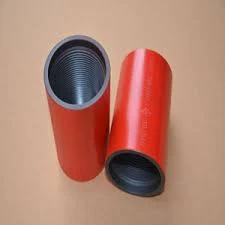- Afrikaans
- Albanian
- Amharic
- Arabic
- Armenian
- Azerbaijani
- Basque
- Belarusian
- Bengali
- Bosnian
- Bulgarian
- Catalan
- Cebuano
- Corsican
- Croatian
- Czech
- Danish
- Dutch
- English
- Esperanto
- Estonian
- Finnish
- French
- Frisian
- Galician
- Georgian
- German
- Greek
- Gujarati
- Haitian Creole
- hausa
- hawaiian
- Hebrew
- Hindi
- Miao
- Hungarian
- Icelandic
- igbo
- Indonesian
- irish
- Italian
- Japanese
- Javanese
- Kannada
- kazakh
- Khmer
- Rwandese
- Korean
- Kurdish
- Kyrgyz
- Lao
- Latin
- Latvian
- Lithuanian
- Luxembourgish
- Macedonian
- Malgashi
- Malay
- Malayalam
- Maltese
- Maori
- Marathi
- Mongolian
- Myanmar
- Nepali
- Norwegian
- Norwegian
- Occitan
- Pashto
- Persian
- Polish
- Portuguese
- Punjabi
- Romanian
- Russian
- Samoan
- Scottish Gaelic
- Serbian
- Sesotho
- Shona
- Sindhi
- Sinhala
- Slovak
- Slovenian
- Somali
- Spanish
- Sundanese
- Swahili
- Swedish
- Tagalog
- Tajik
- Tamil
- Tatar
- Telugu
- Thai
- Turkish
- Turkmen
- Ukrainian
- Urdu
- Uighur
- Uzbek
- Vietnamese
- Welsh
- Bantu
- Yiddish
- Yoruba
- Zulu
vacuum hose coupling
Understanding Vacuum Hose Coupling A Key Component in Fluid Dynamics
In the world of mechanical engineering and fluid dynamics, vacuum hose couplings play a crucial role in connecting hoses in various systems. These couplings are essential for maintaining efficient fluid transfer and ensuring that vacuum systems operate effectively. In this article, we will explore what vacuum hose couplings are, their types, applications, and key considerations when choosing and using them.
What is a Vacuum Hose Coupling?
A vacuum hose coupling is a connector used to join two sections of hose in a vacuum system. It allows for the transfer of air or other gases while maintaining a vacuum. These couplings are designed to withstand negative pressure and often come with features that prevent air leaks, which is vital for the system's overall efficiency.
Types of Vacuum Hose Couplings
1. Clamps and Clips These are among the simplest forms of couplings, often used in low-pressure applications. They consist of a clamp that tightens around the hose, holding it in place securely.
2. Barbed Couplings Barbed couplings have ridges along the length of the fitting, which grip the inside of the hose to create a secure connection. They are commonly used in applications where a tight seal is necessary, such as in suction lines for vacuums.
3. Flanged Couplings These couplings are typically used in high-pressure applications. They consist of two flanges that can be bolted together, providing a robust and leak-proof connection.
4. Quick Disconnect Couplings These couplings allow for quick connection and disconnection of hoses, which is invaluable in applications requiring frequent hose changes. They are designed to maintain a seal even when disconnected and are often used in industrial settings.
Applications of Vacuum Hose Couplings
vacuum hose coupling

Vacuum hose couplings are used across a variety of industries. In automotive applications, they may connect vacuum lines to various components like brake boosters or emission control systems. In the medical field, they can be found in suction devices used for aspiration during surgeries. Moreover, vacuum couplings are essential in manufacturing processes involving vacuum packaging, material handling, and even food processing.
Choosing the Right Vacuum Hose Coupling
Selecting the appropriate vacuum hose coupling depends on several factors
1. Hose Material Ensure that the coupling is compatible with the material of your hoses. Some couplings are designed for specific materials, and using the wrong one could lead to leaks or hose damage.
2. Pressure Rating Consider the working pressure of your vacuum system. Make sure the coupling can handle the pressure requirements without failing under stress.
3. Temperature Resistance If the system operates under extreme temperatures, choose couplings that can withstand such conditions without degrading.
4. Ease of Use Consider how often you need to connect and disconnect the couplings. Quick disconnect options may be more efficient when frequent changes are required.
Conclusion
In summary, vacuum hose couplings are vital components that ensure the efficiency and safety of vacuum systems across various industries. Understanding the types, applications, and selection criteria can help engineers and technicians make informed decisions, ultimately leading to improved system performance. Whether you are working on automotive systems, medical devices, or industrial machinery, never overlook the importance of choosing the right coupling for your vacuum hoses.
-
Tubing Pup Joints: Essential Components for Oil and Gas OperationsNewsJul.10,2025
-
Pup Joints: Essential Components for Reliable Drilling OperationsNewsJul.10,2025
-
Pipe Couplings: Connecting Your World EfficientlyNewsJul.10,2025
-
Mastering Oilfield Operations with Quality Tubing and CasingNewsJul.10,2025
-
High-Quality Casing Couplings for Every NeedNewsJul.10,2025
-
Boost Your Drilling Efficiency with Premium Crossover Tools & Seating NipplesNewsJul.10,2025







